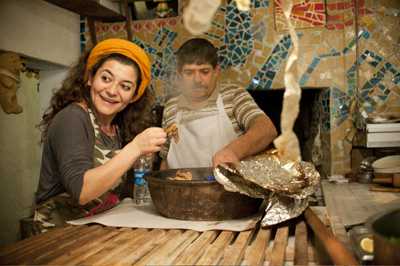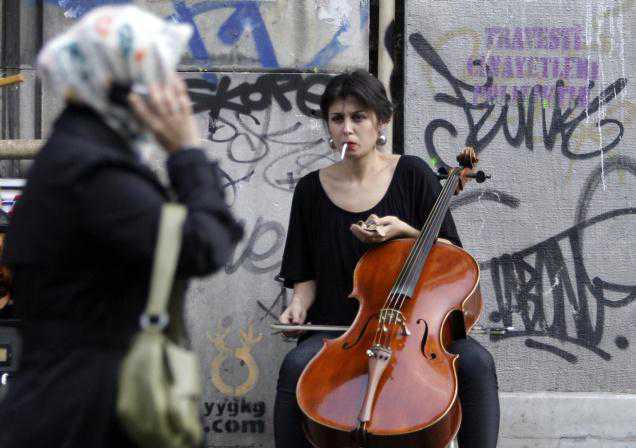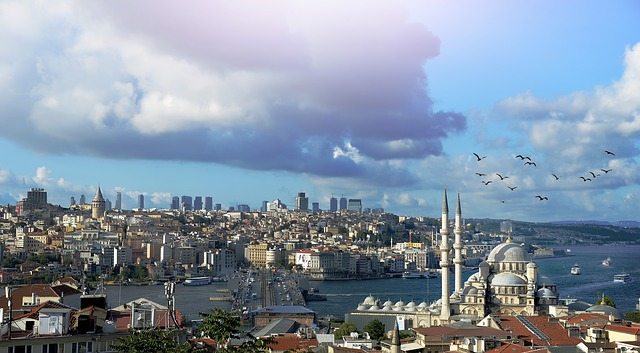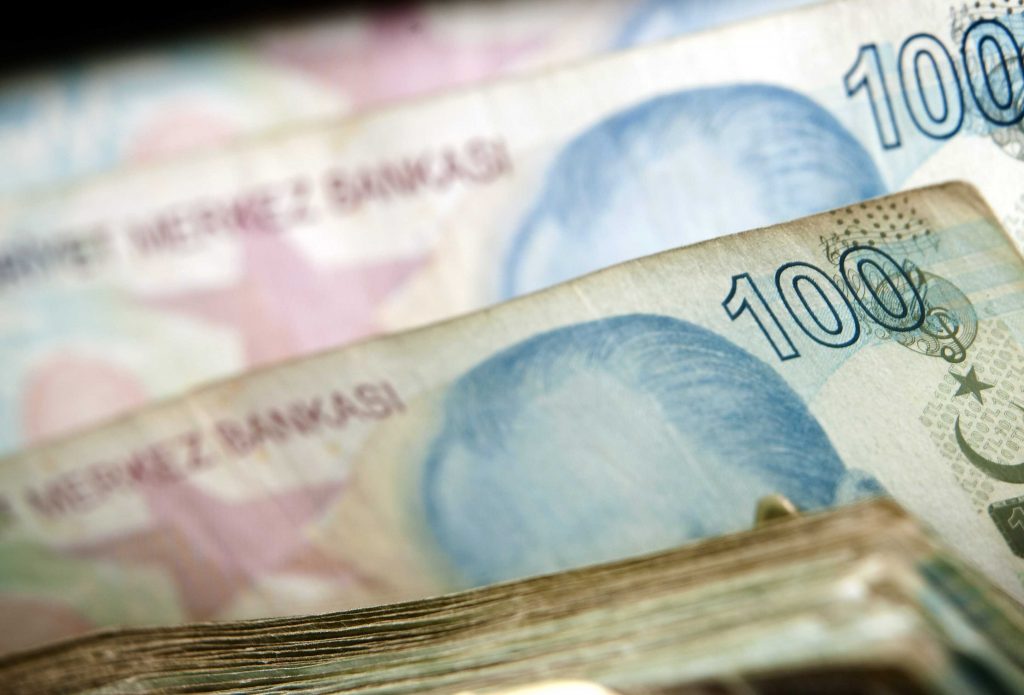ISTANBUL, Turkey — As in any big city you can eat both high and low here, but the sheer number of restaurants per linear foot of sidewalk is unparalleled, at least in our experience. Many are tiny kebap and kofte (meatball) shops occupying six-or eight-foot-wide storefronts with no room to sit. One day, lost in a part of the city behind the university on a street devoted to shops that sold only belt buckles, we saw restaurants that seemed hardly bigger than closets. No bit of real estate is too small to accomodate a guy and a spit.
From one of these places you’re likely to take yout meaty lunch or snack away wrapped in sheets of thin lavash bread or a kind of small (6-inch diameter) puffy pita bread and find a place to scarf it down. Since we don’t see people eating while they walk as is common in the U.S., exactly where the eating happens is something of a mystery. You will pay 6 or 7 Turkish lira for take-away of this sort – $3 or $4.
Almost the first thing we noticed here is how fresh and flavorful the vegetables are. In mid-October the countryside is still producing tomatoes (domates) and index finger-sized cukes (hiyar) which garnish almost every plate. Greens are most likely to come in the form of arugula or half-dollar-sized parsley leaves served on the stems. Although we’re used to using fresh parsley as an ingredient in our home cooking, the amount of it and the fact that it is not separated from its stems surprises us. It adds quite a lot of flavor and a welcome counterpoint to the savory bits of lamb (kuzu) or chicken (tavuk).
The first night we walk from the hotel up to Ayasofia, the sixth century church converted to a mosque after the Ottoman conquest of the city in the 1450’s. We’re headed for a restaurant with a name that makes it easily confused with a number of other eateries we have been told are not as good. Hungry and tired, we settle on a spot we quickly discover is probably not the right one. Though relatively early by Istanbul standards (8 pm), the young man tells us curtly that one thing after another is “finish!”
On another night, we find the right spot. It has a sign announcing that they have been in business 90 years. This is the distinguishing mark we were looking for, but because the sign is on the fourth floor, we missed it the first night. The place is everything it is cracked up to be; the service brisk in a professional way; the kebaps and kofte delicious. Here we learn an important lesson: Always order the lentil soup. The sweet, semolina cake, individual servings cut from a cylinder that looks as though it might weigh thirty pounds, is a splendid, nursery-food dessert not unlike rice pudding, though less creamy. We’re already thinking this will be our go-to spot on any night we’re uncertain of a destination and in no mood to roll the dice.
On a travel day (we drive two and half hours to the ruins of the great ancient city of Ephesus), we stop into what in France would be called a routier and in the U.S. a roadhouse of truck stop. We order various sorts of kebaps and the plates (below) knock us out. You can see how niceley presented everything is. The corba (soup; pronounce the c as a ch) was delicious, a lentil and tomato melange that was surprisingly thick with roughly pureed vegetables and a touch of chilies, we think. The woman (below) was our cook. One of us went to the door of the kitchen to find out who was doing the cooking and there she was. So this was real cucina di mama.
We gave her a little round of applause which she submitted to with only a little blushing.
While out front with us (the little dining room is in plain sight of, and not far from, the very busy roadway) several trucks sounded their horns as they sped by – an audible thanks, no doubt, for many warming bowls of corba past.
The next day, we took ourselves to the Spice Market above which a particularly esteemed restaurant is located. When we finished buying nuts and spices in a shop presided over by a bearded, corpulent guy who seemed none too friendly, I asked about the restaurant called Pandeli.
“Do you know it?”
“Yes, certainly.”
“Can you direct me to to it?”
“I’ll do better. I’ll take you there myself. Follow me.”
We took two steps outside the shop and he pointed up to a sign: “Pandeli.” This was followed by hearty laughter. How many tourists, I wondered, has he played this trick on.
Pandeli has been around, in the same location for around a hundred years, and it has a kind of old timey atmosphere not unlike Durgin Park or Jake Wirth’s, except that it is suffused with late Ottoman decor that feels very authentic because it is. This is a white tablecloth place, with very distinguished-looking white-haired waiters right out of My Dinner with Andre. As you can see from the photo the dishes here have a more European affect. The view from our tableside window looked out on the Galata Bridge and Tower. Five of us paid around $200TL for this lunch (maybe $120). We thought we got our money’s worth, and revelled in the atmosphere of the place until we discovered that the two ladies at the next table were from towns north of Boston. This did something to take the sheen off the experience. Maybe they felt the same way.
The cuisine at Pandeli isn’t what you would called haute, but compared with some of the street food here it begins to look pretty upscale. We stood and watched the rotisseur you see below for a while without really knowing what was going on. We hadn’t seen spits that seemed wrapped with thin ropes (pictured below). The fellow was very busy chopping meat and fat together and filling sandwiches, while his helper wrapped them up and cashed customers out. It was cold, windy, and rainy and the trade was brisk.
We guessed it might be some sort of offal and when we asked our hotel barkeep Hasan about it his eyes lit up. Kokorec (ko-ko-rech) – as this lamb entrails sandwich is called – is one of his favorite street corner treats, although he is careful about where he buys it. “Especially good,” he says, “when you’ve had a little too much too drink.”





